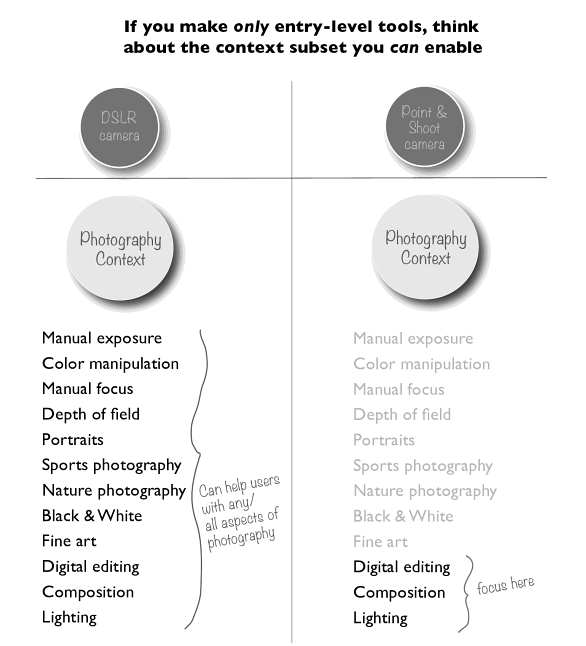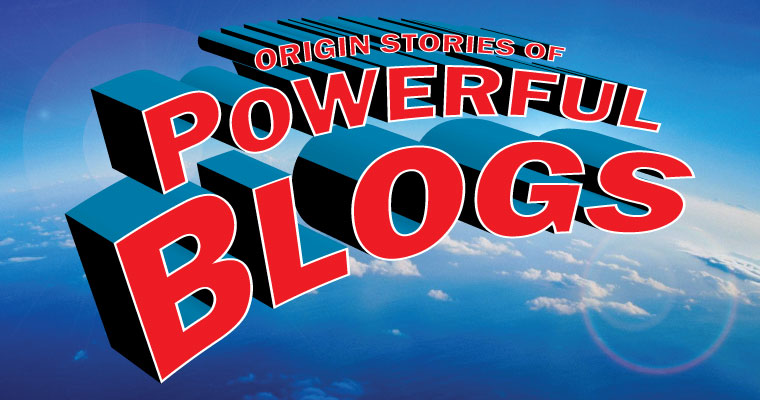Ever wonder how a blog goes from zero to prominent? This is the second post in a series of interviews that covers this very topic (the first post in the series was with Elisa Gabbert).
 This installment features Gregory Ciotti, content strategist at Help Scout, an email support software. (He also writes about marketing, customer success, and communication at GregoryCiotti.com.) Gregory consistently produces remarkable content on his own blog, various other marketing blogs, and for the Help Scout blog. The growth of the Scout blog posts caught my eye… Gregory even shared impressive growth metrics for the company.
This installment features Gregory Ciotti, content strategist at Help Scout, an email support software. (He also writes about marketing, customer success, and communication at GregoryCiotti.com.) Gregory consistently produces remarkable content on his own blog, various other marketing blogs, and for the Help Scout blog. The growth of the Scout blog posts caught my eye… Gregory even shared impressive growth metrics for the company.
To find out more about how the Help Scout blog got to where it is today, I asked Gregory a series of questions about the blog’s early days. Read on to hear his insights:
1. Are there any metrics or general measures of success for the blog you can share?
We are currently in the process of hiring a
growth marketers and analysts, so in the future I hope to have much more interesting data to share. As of right now, I can say that the blog has ~250k visitors per month, is powered by an email list of ~60k subscribers, and has plenty of traffic from search (fluctuates, but over 60% came from search last month).
2. What was the main objective for the blog when you started it?
Customer success for me, first and foremost. Of course, Help Scout is up against some big companies in the help desk space, so we needed a way to get in front of potential customers without relying on paid channels. Content was the perfect solution. We could help people become “badass” at their desired result through the use of education (
this book, a must-read), and drive new trials and revenue through a marketing channel that requires time over money.
3. How much time did you spend on the blog early on?
I am the earliest hire at the company, and I’ve been here since near the beginning. To that I can say… as many hours as one slow-writing Italian can contribute in a week. It’s hard to quantify how much time was (and is) spent on writing, editing, and management. Many, many hours.
4. What was your strategy for the blog? Did you have a specific game plan, just start hitting publish, or something in-between?
The plan was defined by the opportunity, in my eyes. There was no “Copyblogger” equivalent for customer support, so that was the goal. These days we’ve broadened our content to do multiple jobs. Although our bread-and-butter will always be “help readers become badass at customer support,” our strategy has evolved to incorporate things like:
- Real transparency. Instead of trading privacy for attention, we’d rather show you how we work.
- Strongly stating company values. What’s it like to work with us? Our writing will tell you (great for hiring).
- Add more compelling context. We don’t just want to help you with “doing support,” we’ll bring on the best people who can advise you on how to grow your support team.
5. How did you come up with topics for the blog early on?
The one misstep I made in the beginning was focusing too much on creating “the best customer service blog”. The real answer is asking yourself, “What do my customers want to be awesome at?” They hire your product to do said thing. They pay you for that. They will also spend time learning how to be even better at it. As Kathy Sierra explains (seriously, get her book), even a simple tool can offer tons of compelling context.
So “customer service blog” isn’t really a good objective for Help Scout. People hire us for email support, and they want specific advice around being more awesome at that:
phrases,
tone,
data,
styling, and even talking to
angry customers. There’s a lot to learn in support, and I’ve always built our topics along what our customers want to learn most.
6. How long was the content you created?
I have no idea! When it comes to length I always stick to this quote: “The most valuable of all talents is that of never using two words when one will do.” Short enough so it isn’t skipped, long enough to say what you need to say.
7. How frequently did you publish new content?
Once per week, and now we’re up to twice per week. It’s early, since we moved up in January of this year, but the results have been fantastic.
8. What content types did you publish that really worked?
Nothing has worked so well for us as “just long enough” (often ~1K words) articles that cover a major pain point in support. News posts won’t work, in-depth articles can work but can also get skipped, interviews aren’t our style, and infographics are… okay. But overrated.
9. What content types did you retire because they didn’t work?
Mentioned above, but “customer service” blog posts instead of those articles that dealt directly with email support and being awesome at helping customers over email.
11. What content (if any) worked early on, but was something you moved away from? Why did you stop producing it, and would you still recommend it?
Infographics are great for grabbing some initial traffic, but unless you completely outsource the entire process, they aren’t worth the time. At least they weren’t in our case. If you have a way to move on them quickly, they are okay. Otherwise stay away.
12. How did you promote your content early on? Did you or someone involved with the blog have an established following or were you starting from scratch?
Nothing other than syndication.
Outreach emails played a part, but mostly it was just me getting in touch with interesting people. I’d love to know more on effective promotion, especially through paid channels.
13. Did you ever think about quitting, pausing, or limiting investment in the blog?
Never.
14. How long did it take for the blog to get “traction”?
I would say it took about a year. We moved from almost nothing (seven customers) to having a newsletter of 25,000 people, or something close, and hundreds of customers. Now we have thousands. I never had a doubt, not from arrogance, but because we were making small steps every single week, and we didn’t really have any downturn once the ball started rolling.
Something we did early on was to have our
resources entirely gated. They no longer are, but at one point we were driving nearly 3k new leads per month from PDF downloads. Definitely look into gated content if you haven’t already.
15. If you had to start over knowing what you know now, what would you do differently? What advice would you give the version of yourself that was about to start the blog?
What I cringe about most is my writing. What I wish I would have done better is talking to more customers early on. The average content marketer’s ability to avoid this simple solution is akin to people writing in to Dear Abby instead of talking to the person they’re gabbing about. “I wonder if…” conversations should go the way of the dinosaur.
Talk to customers! Don’t research topics, research the people you’re serving.
16. If you had to start over, what would you absolutely not change that you did early on?
Our dedication to great design, mostly because I’ve been able to work with
Jared from the beginning and depend on him to make my garbage look good.
Image Credits
Featured Image: Created by author for Search Engine Journal
Gregory Ciotti’s photo used with permission.
 This installment features Gregory Ciotti, content strategist at Help Scout, an email support software. (He also writes about marketing, customer success, and communication at GregoryCiotti.com.) Gregory consistently produces remarkable content on his own blog, various other marketing blogs, and for the Help Scout blog. The growth of the Scout blog posts caught my eye… Gregory even shared impressive growth metrics for the company.
This installment features Gregory Ciotti, content strategist at Help Scout, an email support software. (He also writes about marketing, customer success, and communication at GregoryCiotti.com.) Gregory consistently produces remarkable content on his own blog, various other marketing blogs, and for the Help Scout blog. The growth of the Scout blog posts caught my eye… Gregory even shared impressive growth metrics for the company.





